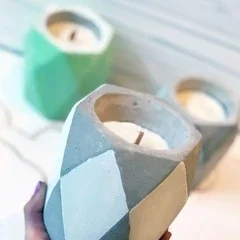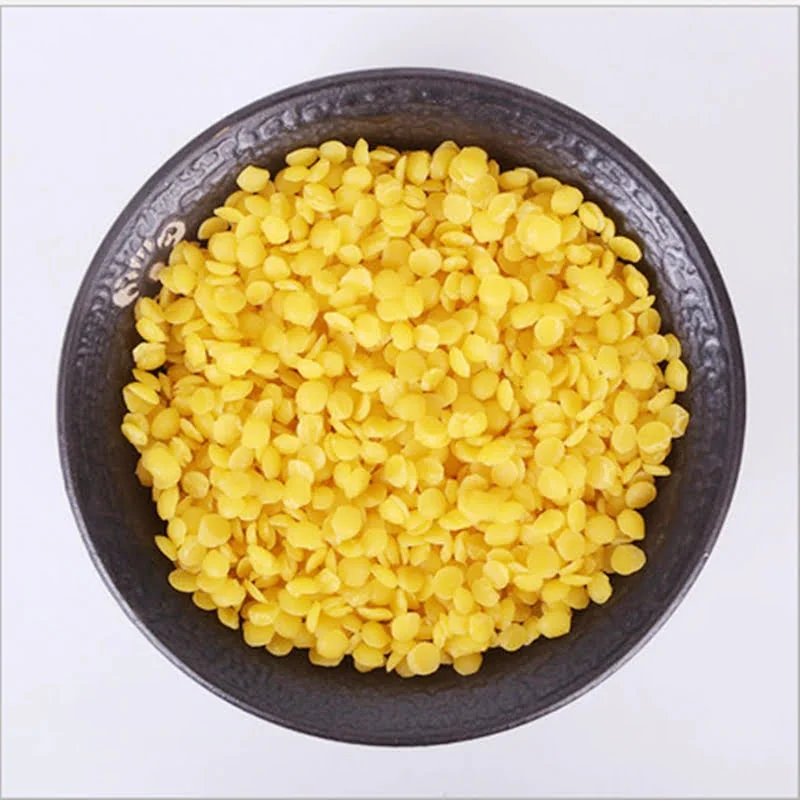Introduction
Candle making is an incredibly popular and fulfilling hobby, one that has enjoyed a resurgence in recent years. Candles have been around since ancient times, used for both light and ceremony. Nowadays, candle making is an artistic hobby enjoyed by people all over the world.
At its most basic definition, candle making involves melting wax to form a container for a wick before it’s lit. However, what makes it special is the ability to add your own touches and personalize candles to individual tastes. This can be done by coloring the molten wax and adding scents like essential oils or synthetic fragrances. Scented candles are hugely popular around the world due to the wide variety of aromas available. Essential oils offer a much more natural aroma than synthetics as well as providing wellbeing benefits; whereas synthetic fragrance oils often come with stronger and often varied smells. A creative touch to your candles can turn them into something really unique.
An Overview of Popular Candle Making Scents
Candle making scents come in a variety of aromas and evoke a wide range of emotions. Popular scents are often associated with holidays, seasons, and special occasions. The most popular scents for candle making include:
Sandalwood: Sandalwood has a woodsy scent and can be combined with other fragrances to create warm, inviting atmospheres during Fall months. It is often used during the winter, when many people prefer earthy and spicy aromas for their candles.
Vanilla: Vanilla is full of warm and cozy vibes, usually associated with the Christmas season or baking desserts. This scent has been known to reduce stress levels as it evokes familiarity and comfort.
Cinnamon: Cinnamon has a rich aroma that appeals to most senses. It promises joyfulness throughout the winter months while emitting a sense of positive energy which encourages creativity and productivity.
Jasmine: This flowery aroma brings on the feel of springtime – while open airy ambiance will help you relax and unwind from stressful days spent inside in colder months. Jasmine helps restore your sense of calmness and balance by providing gentle therapeutic benefits.
Lavender: Lavender provides an enchanting aroma and is often used for conditions such as insomnia, anxiety, tension headaches, depression, and stress-related stomach aches. Its calming effect can evoke peace and relaxation which is necessary in stressful times throughout any season or occasion.
The Aroma Therapy Benefits of Candle Making Scents
Candle making scents can provide a range of aromatherapy benefits, from calming anxieties and improving sleep quality to boosting energy levels. The essential oils used in candle making are extracted from flowers, fruits, trees and other plant materials. They are then combined with wax to create a variety of fragrances. For example, lavender is known for its soothing properties that can reduce stress and anxiety while citrus scents can help to boost energy levels. Some fragrances also contain a combination of different essential oils that have therapeutic benefits, such as the uplifting scent of clove and citrus mixed together or the relaxing scent of lavender mixed with patchouli. By inhaling the aroma of these candles, it can help us feel relaxed, energized and motivated when we light them in our home or office environment, allowing us to enjoy their sensual benefits as part of our daily routine. Additionally, some studies suggest that certain scented candles may even
have health benefits when it comes to relieving allergies and asthma symptoms due to their antibacterial properties. Candle makers can also customize fragrances according to their preferred scent preferences; which means there’s something for everyone! Whether you prefer a cake-like smell when baking or need an invigorating scent for your yoga class ” whatever the preference you’ll be able to find a suitable fragrance through candle making scents.
How To Choose the Right Scents for Candle Making
When it comes to candle making, one of the most important decisions you have to make is choosing the right scents for your product. With so many options out there, it can be overwhelming to decide which scents will work best for you and add a unique touch to your product. Here are some tips on how you can select the ideal scent for your candles.
First, consider what type of atmosphere or feeling you want to evoke in your customers when they smell the scent. Do you want a warm and inviting flavor that brings out the senses or something more relaxing? Also think about what environments bests suits the candles – whether it be an outdoor setting, a spa-like atmosphere, or even just indoors.
Next, look for aromatherapy oils that pair well with each other in order to create a unique blend of fragrances. You might combine floral scents like jasmine and lavender together with citrusy scents such as orange and lemon, or earthy scents like sandalwood and patchouli; experiment with different combinations to find the perfect one! After you’ve chosen your desired scent combination, pick out essential oils or fragrance oils that match up with them so that you get maximum potency in both aroma and scent for your candles.
Previous advice given cannot be ignored – use proper ventilation with these ingredients since some of them emit strong vapors when heated during manufacturing processes. Be sure to research all safety precautions thoroughly before handling any waxes/oils used in candle making as temperature must be monitored carefully while melting down waxes/scents ingredients (since they are flammable). Lastly, when creating new scented candles always carry out small experiments beforehand to evaluate its success – if the results are positive go ahead and make more but if not then don’t hesitate to try something else!
Creative Candle Making Scents to Try Out
When it comes to making candles, you don’t have to stick with the same floral and citrus scents. Explore endless possibilities! Here are some creative candle making scents to try out:
1. Apple Pie: Blend sweet apples, nutmeg, and cinnamon for a memorable scent that smells like freshly baked goodness.
2. Vanilla Pinecone: This cozy scent combines vanilla extract and pinecone aromas for a distinct wintry aroma that’s perfect for cold weather months.
3. Honeycomb Jelly: Need something with a bit more zing? Mix honeycomb and jellybean aromas for an unexpected combination of sweetness and tartness.
4. Salted Caramel Popcorn: Create a satisfying salty-sweet combo by blending together buttery caramel, buttery popcorn, and a hint of sea salt.
5. Tropical Paradise: Capture the essence of summer vacation with coconut, pineapple, mango and papaya essential oils – plus a slight touch of basil for something unique!
Common Blunders That Could Result From Poor Scent Selection
Poor scent selection when making candles can lead to a range of blunders that could include: 1) materials not blending or reacting well together, resulting in poorly mixed scent; 2) scents becoming too strong and overwhelming; 3) the candle may not smell like it should; 4) unintended unwanted chemical reactions between different components of the scent; 5) unexpected color changes, often leading to an unattractive hue; 6) scents fading faster than expected, leading to a quickly forgotten experience. Ultimately poor selection of scents can result in unsatisfactory candles being made that do not meet quality standards. Other potential issues may come up if scents are incorrectly matched with wax type, such as accelerated melting or oil blooming.
Handy Tips and Tricks to Maximize Results With Candle Making Scents
Candle making scents can be tricky to get just right, but the results make the effort worthwhile. Here are a few tips and tricks to help maximize the results of your candle making scents:
• Start small ” when first experimenting with different scents, start with small batches so that you do not waste materials if it does not turn out quite how you were expecting.
• Test scent combinations ” any combination of scents you create should be tested in a small batch beforehand in order to ensure it will turn out as desired before committing to a larger batch.
• Build fragrance gradually ” begin by adding small amounts of scent oil until the desired strength is achieved, as too much can spoil the mixture and result in wasted product.
• Use complimentary fragrances ” when combining two or more fragrances, ensure they compliment each other and enhance their aroma together instead of clashing and cancelling each other out.
• Consider percentage ranges “too strong can be overwhelming and too weak could fail to deliver the desired effect entirely. Typical scent percentages for containers typically range from 8% -12%.
//
When storing unused fragrance oils for later use, always keep them tightly sealed and properly labeled to extend their shelf-life and prevent accidental mixing of unrelated scents. Essential oils are more delicate than synthetic blends so should be added at lower rates than suggested above to avoid overpowering both the wax and other fragrance compounds being used. When in doubt always refer back to recommended usage instructions provided by individual essential oil manufacturers. Furthermore, freezing temperatures or direct heat exposure may affect fragrance stability or cause it to break down completely; therefore store all fragrance oils at room temperature or below.
Final Musings
Candle making scents offer an incredibly diverse range of options for amateur and expert artisans alike. Candle makers can mix, match and combine multiple scents, blend colors and shapes to create unique pieces that often become keepsake mementos. Fragrance oils, essential oils and other aromatic botanical extracts all add depth to the candle’s scent portfolio. Additionally, natural waxes such as beeswax, vegatable waxes or a combination of both sets the stage on which a fragrant masterpiece may be crafted. With this myriad of possibilities available at one’s disposal the creative ambitions are limitless.
Experimenting with candle making scents is a memorable experience that appeals to the senses”sight, smell and touch. Standing in front of the “open fridge” as my family calls it”an entire shelf lined with tiny bottles full of aromas”I am instantly transported elsewhere: lush gardens, crisp woods, cool lakeside air inhabited by sparkling florals, herbs and sandalwood beckoning me closer. As I reach out with my fingertips I find myself hesitant to disturb them… until I hit play! That’s when the real fun begins. Utilising techniques such as layering multiple oils creates more complex aroma profiles; combining complimentary scents like lavender and rose helps balance top notes with bottom ones; or adjusting the percentage of each oil can build something bigger than the individual parts will ever be alone. The final result is a personalised work or art to cherish or give away: they are unique conversation starters that lend a hand in reminding you where you have been and how far you have come in your own craft-making journey ” something beautiful steeped in memories captured in olfactory gold form!

Welcome to my candle making blog! In this blog, I will be sharing my tips and tricks for making candles. I will also be sharing some of my favorite recipes.





